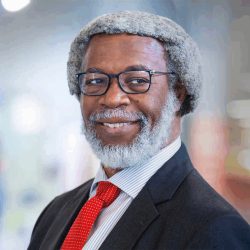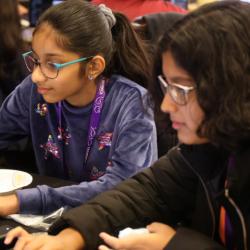The Secrets Atoms Hold, Part 2: Gravity
Gravity is a fixture of our everyday lives, particularly apparent when we drop a piece of toast on the kitchen floor or trip over an unseen step. Not surprisingly, physicists have studied gravity heavily over the centuries. The best take to date is Einstein’s theory of general relativity, which has been confirmed by every observation to date.
And yet, the theory of general relativity is incompatible with our best understanding of the microscopic world—quantum mechanics. Coming up with a way to reconcile the two is one of the greatest challenges of modern physics. Although many theories of quantum gravity have been proposed, experimental tests are extremely challenging: Gravity governs huge things, like planetary motion, while quantum mechanics deals more in tiny things, like atoms and subatomic particles. Promising new experiments are poised to use really cold atoms and their quantum interference to spot tiny effects that might be due to quantum gravity.
In this episode of Relatively Certain, JQI Adjunct Fellow Marianna Safronova and JQI Fellow Charles Clark return to discuss the limits of our understanding of gravity, and how new experiments with atom interferometers may be the key to not only a higher-precision understanding of gravity but also possible new physics.
This episode of Relatively Certain was produced by Dina Genkina, Chris Cesare, Bailey Bedford, and Emily Edwards. Music featured in this episode includes Picturebook by Dave Depper, Dark Water by Xylo-Ziko, 80’s by Crowander, Disquiet by Bio Unit, and Geiger-Muller by Metre. Sound effects adapted from YleArkisto(link is external)/CC BY 3.0(link is external). Relatively Certain is a production of the Joint Quantum Institute, a research partnership between the University of Maryland and the National Institute of Standards and Technology, and you can find it on iTunes(link is external), Google Play, Soundcloud(link is external) or Spotify(link is external).







